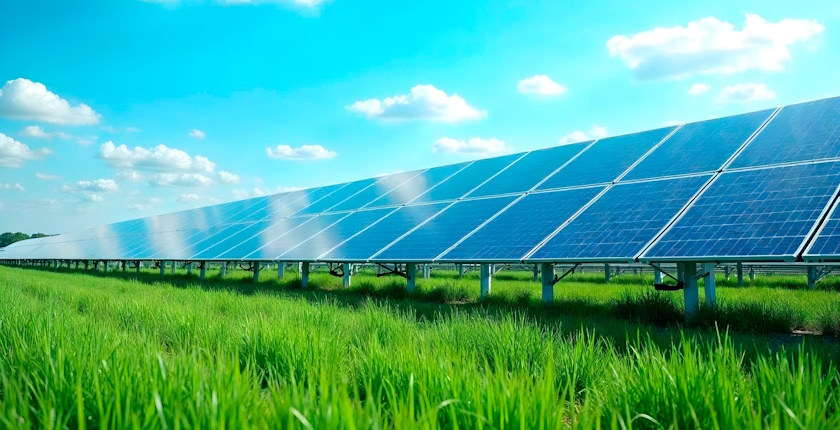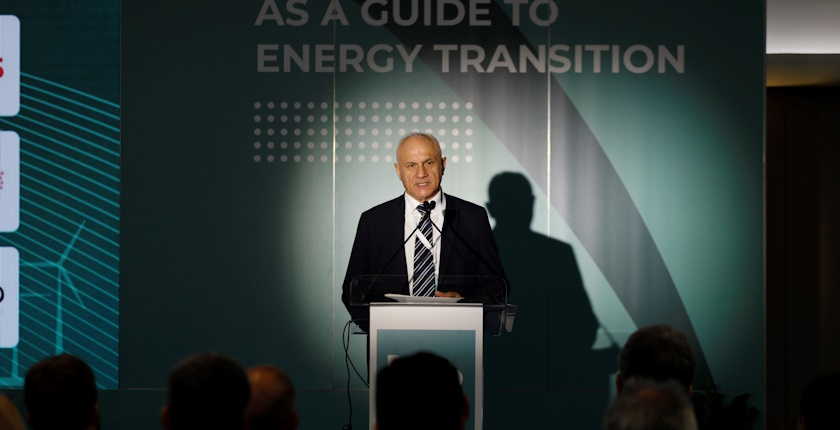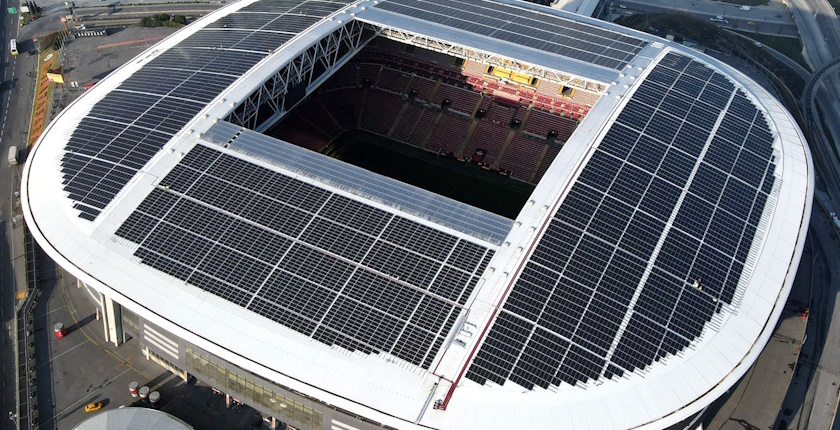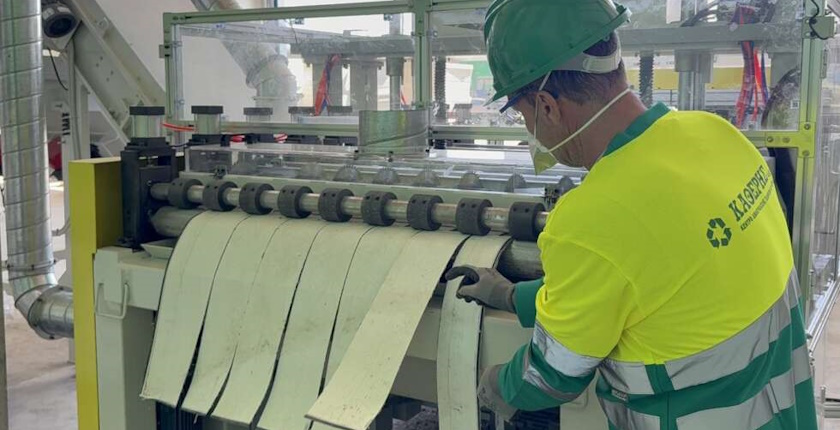
IEA’s Global Energy Review: Electricity use is growing rapidly, driven by heatwaves, electrification, data centers, AI
Global energy demand grew at a faster-than-average pace in 2024. The increase was led by the electricity sector, driven by extremely high temperatures, electrification and digitalization. Renewables and natural gas covered the majority of additional energy needs while renewables and nuclear energy did the same for the growth in power generation, according to the IEA’s Global Energy Review.
The latest edition of the IEA’s Global Energy Review brings data on energy demand, supply, the uptake of new energy technologies and energy-related carbon dioxide (CO2) emissions.
Global energy demand rose by 2.2% last year – lower than GDP growth of 3.2% but considerably faster than the average annual demand increase of 1.3% between 2013 and 2023, the report underlines.
Emerging and developing economies accounted for over 80% of the increase in global energy demand in 2024. In China, energy consumption rose by less than 3%, half its 2023 rate and well below the country’s recent annual average. After several years of declines, advanced economies saw a return to growth, with their energy demand increasing by almost 1% in aggregate, according to the report.
Demand for all fuels and technologies expanded in 2024. The increase was led by the power sector as electricity demand surged by 4.3%, well above the 3.2% growth in global GDP.
Global electricity consumption rose by nearly 1,100 TWh in 2024, more than twice the annual average increase over the past decade. China made up more than half of the global increase in electricity demand.
The electricity consumption has increased due to higher demand for cooling, rising consumption by industry, the electrification of transport and growth of data centers and artificial intelligence, according to the report.
Electricity use in buildings accounted for nearly 60% of overall growth in 2024. The power capacity of data centers globally increased by an estimated 20%, or around 15 GW, mostly in the US and China. Meanwhile, global sales of electric cars rose by over 25%, surpassing 17 million units and accounting for one fifth of all car sales.
Renewables covered the biggest share (38%) of global energy supply growth, followed by natural gas (28%), coal (15%), oil (11%) and nuclear (8%), the report reads.
Renewables and nuclear energy together provided 80% of the growth in global electricity generation. They contributed 40% of total generation, the most so far, with renewables alone supplying 32%.
New renewables hit record levels for the 22nd consecutive year, with around 700 GW of total capacity added in 2024, nearly 80% of which was solar power.
Birol: The IEA report puts some clear facts on the table about what is happening globally
Photovoltaic and wind power output increased by a record 670 TWh, while generation from natural gas rose by 170 TWh and coal by 90 TWh. In the European Union, the share of generation provided by solar and wind surpassed the combined share of coal and gas for the first time. In the United States, the share of photovoltaics and wind rose to a combined 16%, overtaking coal. In China, they reached nearly 20% of total production.
According to IEA Executive Director Fatih Birol, there are many uncertainties in the world today and different narratives about energy, but the report puts some clear facts on the table about what is happening globally.
“What is certain is that electricity use is growing rapidly, pulling overall energy demand along with it to such an extent that it is enough to reverse years of declining energy consumption in advanced economies. The result is that demand for all major fuels and energy technologies increased in 2024, with renewables covering the largest share of the growth, followed by natural gas. And the strong expansion of solar, wind, nuclear power and EVs is increasingly loosening the links between economic growth and emissions,” he stressed.
Natural gas recorded the strongest demand growth among fossil fuels
As a result of the rise in power consumption, natural gas saw the strongest demand growth among fossil fuels. It increased by 2.7% in 2024, rising by 115 billion cubic metres, compared with an average of around 75 billion annually over the past decade.
China had the largest absolute growth in gas demand in 2024, by over 7% or 30 billion cubic meters. Demand expanded by around 2% or 20 billion in the United States, and modestly in the European Union.
Coal demand increase was driven by cooling needs
Global coal demand rose by 1% in 2024, half the rate of increase seen the previous year, according to the report.
Intense heatwaves in China and India pushed up electricity consumption for cooling. The two countries contributed more than 90% altogether of the annual increase in coal consumption globally, the report underlined.
CO2 emissions from the energy sector continued to increase in 2024 but at a slower rate than in 2023.
“Growth in energy-related carbon dioxide (CO2) emissions continues to decouple from global economic growth. Emissions growth slowed to 0.8% in 2024, while the global economy expanded by more than 3%,” IEA said.
Global energy demand grew at a faster-than-average pace in 2024. The increase was led by the electricity sector, driven by extremely high temperatures, electrification and digitalization. Renewables and natural gas covered the majority of additional energy needs while renewables and nuclear energy did the same for the growth in power generation, according to the IEA’s Global Energy Review.
The latest edition of the IEA’s Global Energy Review brings data on energy demand, supply, the uptake of new energy technologies and energy-related carbon dioxide (CO2) emissions.
Global energy demand rose by 2.2% last year – lower than GDP growth of 3.2% but considerably faster than the average annual demand increase of 1.3% between 2013 and 2023, the report underlines.
Emerging and developing economies accounted for over 80% of the increase in global energy demand in 2024. In China, energy consumption rose by less than 3%, half its 2023 rate and well below the country’s recent annual average. After several years of declines, advanced economies saw a return to growth, with their energy demand increasing by almost 1% in aggregate, according to the report.
Demand for all fuels and technologies expanded in 2024. The increase was led by the power sector as electricity demand surged by 4.3%, well above the 3.2% growth in global GDP.
Global electricity consumption rose by nearly 1,100 TWh in 2024, more than twice the annual average increase over the past decade. China made up more than half of the global increase in electricity demand.
The electricity consumption has increased due to higher demand for cooling, rising consumption by industry, the electrification of transport and growth of data centers and artificial intelligence, according to the report.
Electricity use in buildings accounted for nearly 60% of overall growth in 2024. The power capacity of data centers globally increased by an estimated 20%, or around 15 GW, mostly in the US and China. Meanwhile, global sales of electric cars rose by over 25%, surpassing 17 million units and accounting for one fifth of all car sales.
Renewables covered the biggest share (38%) of global energy supply growth, followed by natural gas (28%), coal (15%), oil (11%) and nuclear (8%), the report reads.
Renewables and nuclear energy together provided 80% of the growth in global electricity generation. They contributed 40% of total generation, the most so far, with renewables alone supplying 32%.
New renewables hit record levels for the 22nd consecutive year, with around 700 GW of total capacity added in 2024, nearly 80% of which was solar power.
Birol: The IEA report puts some clear facts on the table about what is happening globally
Photovoltaic and wind power output increased by a record 670 TWh, while generation from natural gas rose by 170 TWh and coal by 90 TWh. In the European Union, the share of generation provided by solar and wind surpassed the combined share of coal and gas for the first time. In the United States, the share of photovoltaics and wind rose to a combined 16%, overtaking coal. In China, they reached nearly 20% of total production.
According to IEA Executive Director Fatih Birol, there are many uncertainties in the world today and different narratives about energy, but the report puts some clear facts on the table about what is happening globally.
“What is certain is that electricity use is growing rapidly, pulling overall energy demand along with it to such an extent that it is enough to reverse years of declining energy consumption in advanced economies. The result is that demand for all major fuels and energy technologies increased in 2024, with renewables covering the largest share of the growth, followed by natural gas. And the strong expansion of solar, wind, nuclear power and EVs is increasingly loosening the links between economic growth and emissions,” he stressed.
Natural gas recorded the strongest demand growth among fossil fuels
As a result of the rise in power consumption, natural gas saw the strongest demand growth among fossil fuels. It increased by 2.7% in 2024, rising by 115 billion cubic metres, compared with an average of around 75 billion annually over the past decade.
China had the largest absolute growth in gas demand in 2024, by over 7% or 30 billion cubic meters. Demand expanded by around 2% or 20 billion in the United States, and modestly in the European Union.
Coal demand increase was driven by cooling needs
Global coal demand rose by 1% in 2024, half the rate of increase seen the previous year, according to the report.
Intense heatwaves in China and India pushed up electricity consumption for cooling. The two countries contributed more than 90% altogether of the annual increase in coal consumption globally, the report underlined.
CO2 emissions from the energy sector continued to increase in 2024 but at a slower rate than in 2023.
“Growth in energy-related carbon dioxide (CO2) emissions continues to decouple from global economic growth. Emissions growth slowed to 0.8% in 2024, while the global economy expanded by more than 3%,” IEA said.





